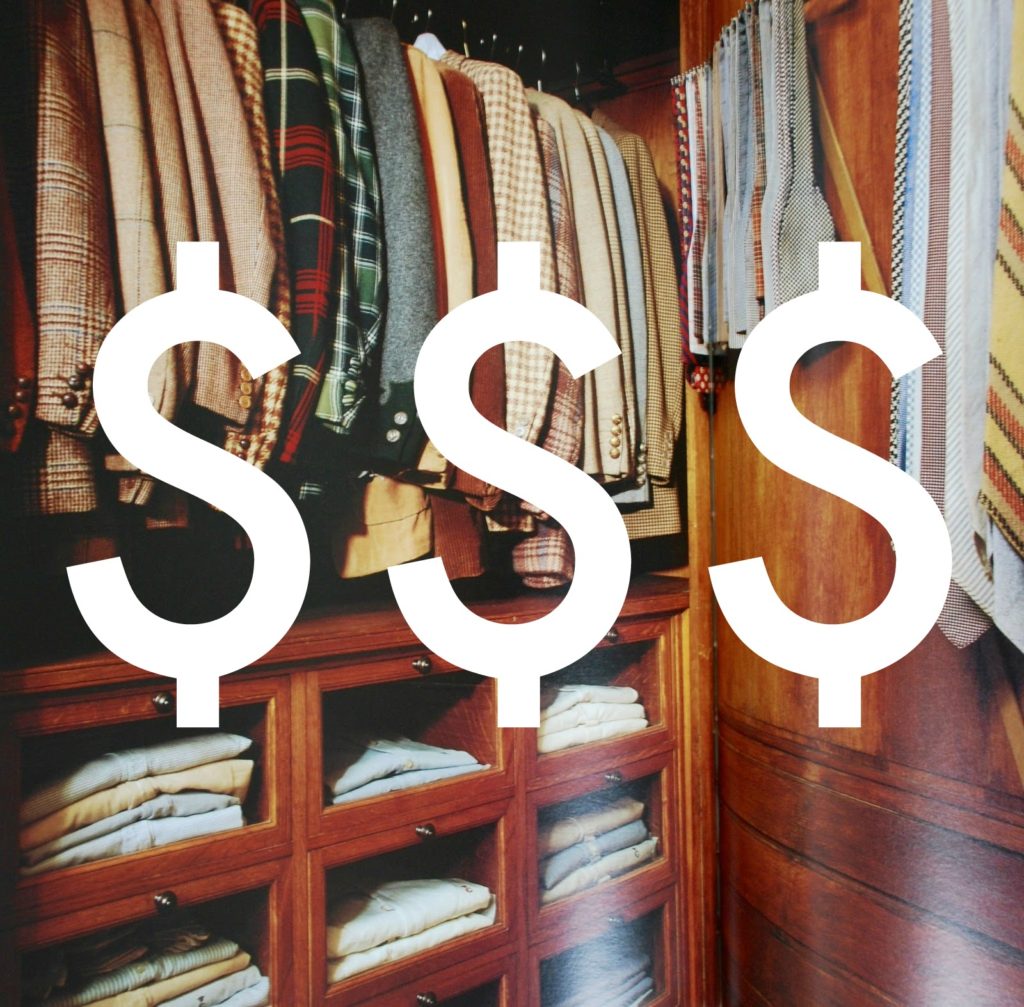
If you, like me, are chipping away at your spring cleaning day-by-day, you’ve probably dug out some clothes that you no longer wear or never wore in the first place, stuff you tried out but that never quite worked. To quote Jian Deleon, every great wardrobe is built on a foundation of expensive mistakes. Maybe you’ve Kondo’d yourself into a corner, with a big pile of non-joy-sparking jawnz threatening to overwhelm your apartment. We’ve covered before the various ways to get rid of your stuff: donation is easy and free (and can benefit other people, as well as provide a tax benefit for you).
Consigning can be as quick as putting everything in a box and sending it to a reliable consigner such as Luxeswap or Tailored Consignment, or a consignment site such as the RealReal. Or if you’re in a city, taking it somewhere like Buffalo Exchange or Beacon’s Closet. Of course, you pay for those services and those sellers’ consignment fees, which are usually hefty.
I do most of my selling myself, on eBay, Grailed, or forums such as Styleforum. These platforms have costs, too. Grailed charges 6%; eBay charges 10% plus small fees for creating a listing. Styleforum and forums like it don’t generally charge for listings, although some offer marketing tools for a price. If you’re using Paypal, you’ll pay them a bit as well.
All the more reason to get the best price for the clothes you want to sell. Some key areas to work on in order to get the most for your pile of crap:
Take Clear Photos
You don’t need a pro setup to take decent pictures. Phone cameras can generally handle it (I mean, it doesn’t hurt to have a decent camera, but this is an article about getting RID of gear). When possible, you should:
- Take photos in natural, indirect light. Turn your flash off; turn nearby lamps and overhead lights off; take photos near a window but not in a bright sunbeam. Natural, even light shows your clothes at their best.
- Make the clothing look neat. Make sure your clothes are clean and relatively wrinkle free. Fold or lay items out neatly, or if they look better hung up, use a decent hanger and a garment rack, if possible.
- Use a clean, neutral background. A dirty carpet can kill a sale. Take photos of items on a clean surface that shows off your clothing–a dark jacket on a dark wall will blend in. Use a clean wood floor or table, a clean white sheet or tablecloth, or spring for a roll of seamless photography background paper. The keyword here is clean; you want to downplay the pre-owned nature of the item. A white background is ideal.
- Edit your photos, just a little. Crop your toes out of the frame (pro tip: when shooting clothing flat on the floor, stand on a chair to get the right angle. If you have one, use a tripod). Maybe bump up the contrast a little, or adjust the exposure (brightness) up or down to make the item look better.
List Meaningful Measurements
Most online shoppers are pretty savvy these days. A lot of guys have taken to heart the long-standing advice to know your measurements, or the dimensions of the clothes you own that fit best, and use those to help make buying decisions to lower risk.
As a seller, that means getting out your tailor’s tape and including measurements from the jump — forcing people to ask you for measurements puts an additional step between them and smashing that buy-it-now button.
- For tops and jackets, give measurements for the chest, across the shoulders, overall length, and arm length, at least. Consider waist measurements, separate dimensions for front and back length, if different, and for tailoring, seam allowances when you can easily determine them.
- For pants, list actual waist measurements, inseam, and leg opening. If possible and/ or relevant, add rise, outseam, or thigh/knee measurements.
- For shoes, dimensions are less helpful, in my opinion, and harder to get right, but buyers appreciate them anyway.
Add Relevant Details to the Listing
Find a good balance between enough detail (is it new? Has it been altered? What’s the fabric content? What was the original price?) and too much information/reliance on cliches (I don’t care so much which family member gave it to you, or that there’s “plenty of life left”).
Set an Effective Price
Philosophies on price vary, and can differ by market. On eBay, many sellers have good experiences with $0 starting bids to establish interest with browsing buyers — obviously there’s risk there, too. When setting negotiable buy-it-now prices, as sellers often do on Grailed, you may start a little higher, and expect buyers to send offers expecting a discount (a.k.a. lowballs).
Creating a good listing can be a decent amount of work, which is why people use consigners. I’ve found, over 10+ years of occasionally selling stuff this way, a little extra work leads to quicker sales at better prices.







